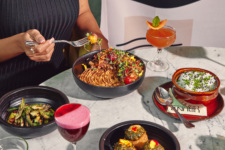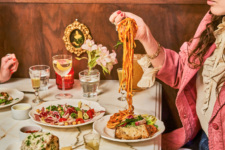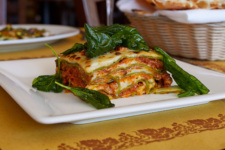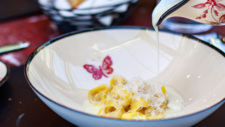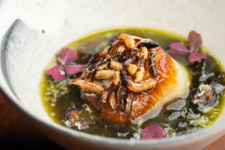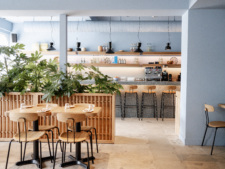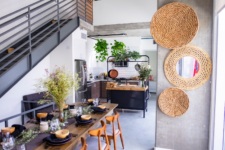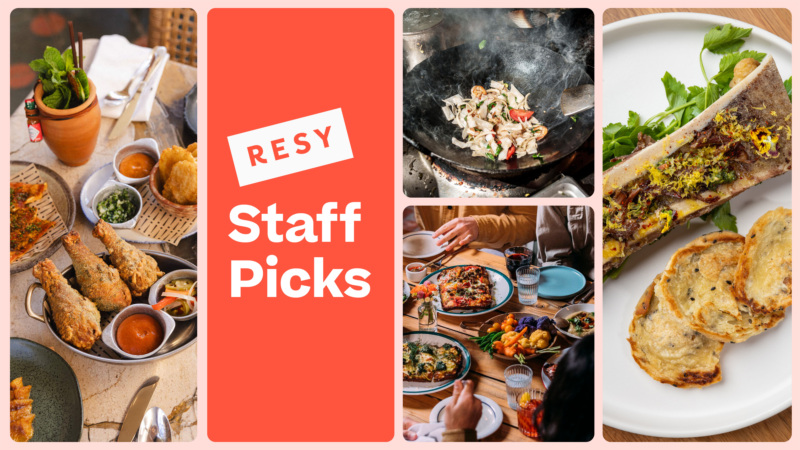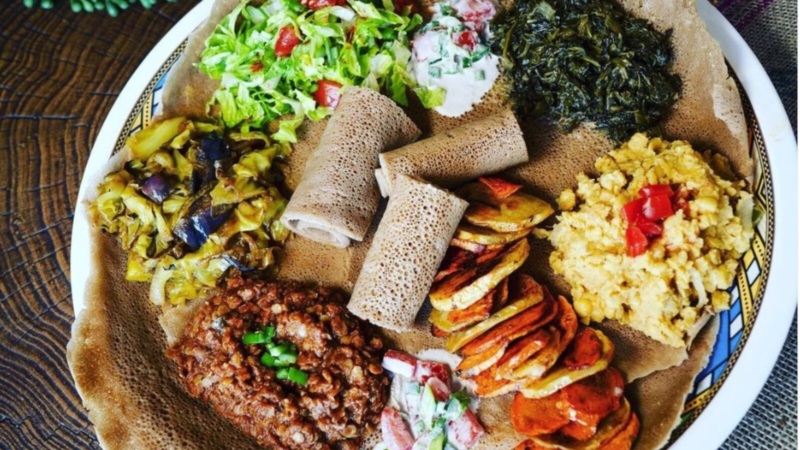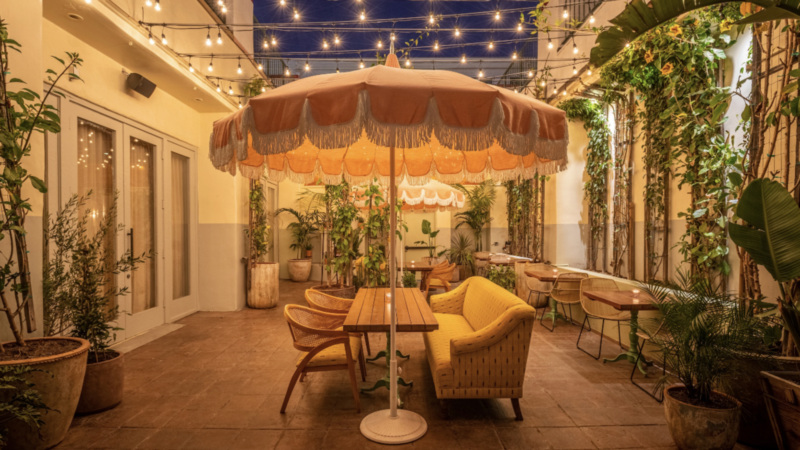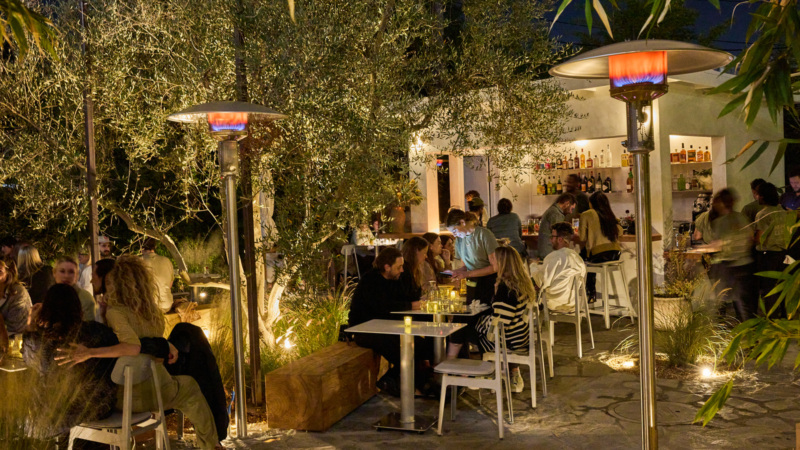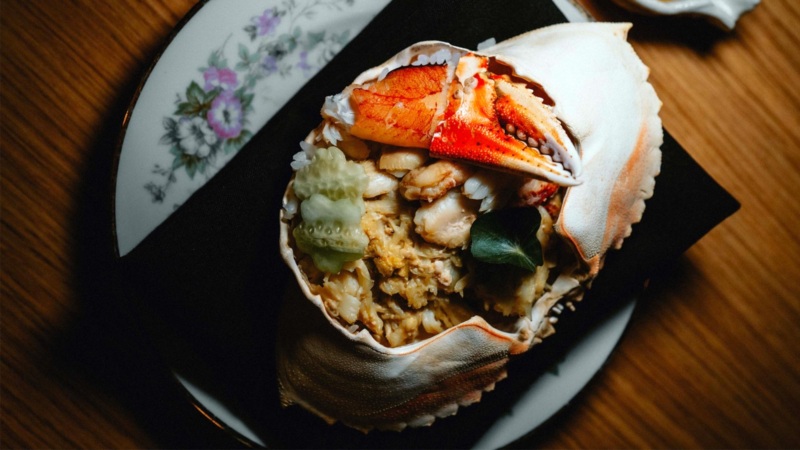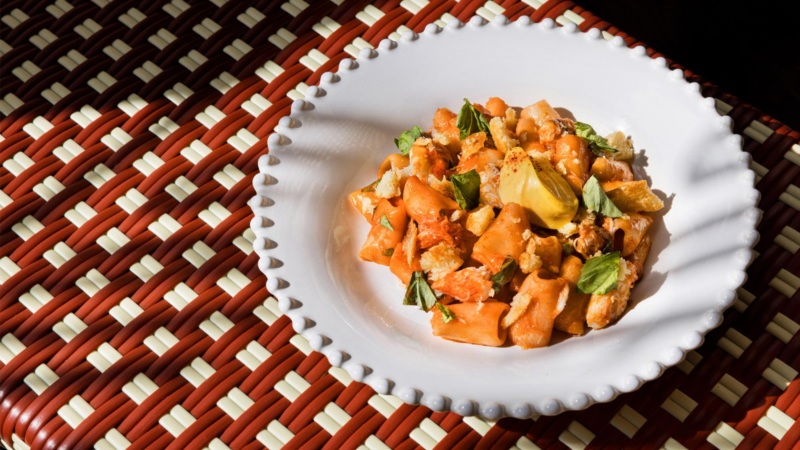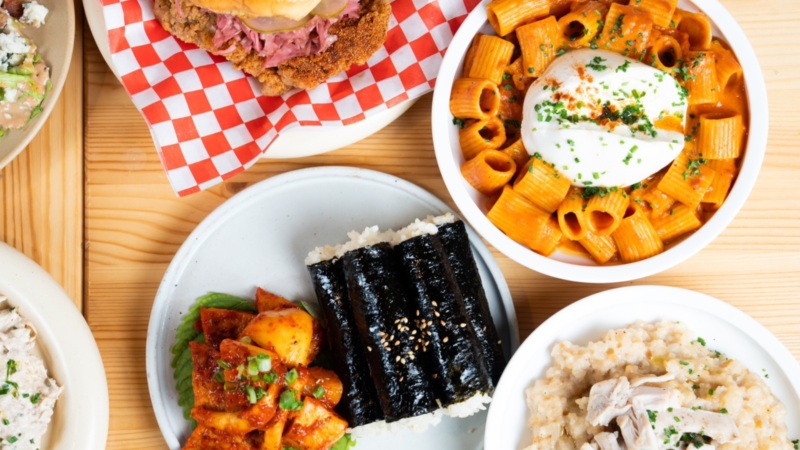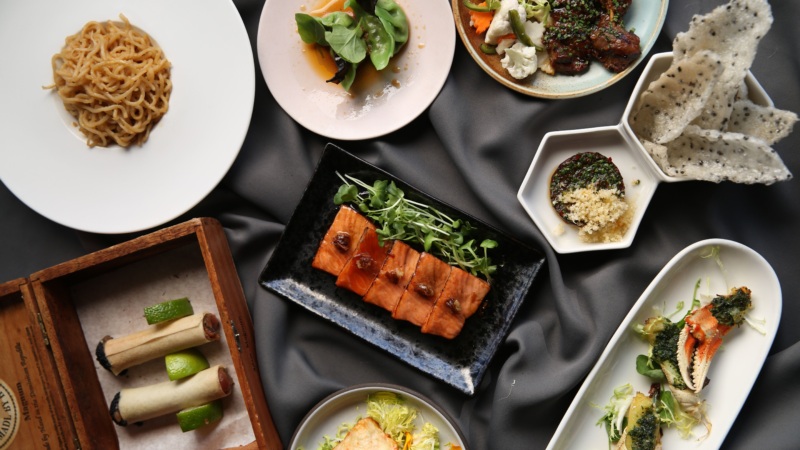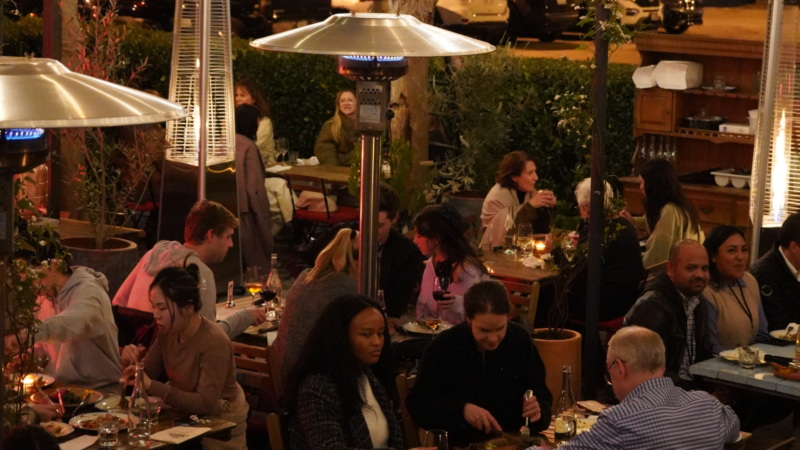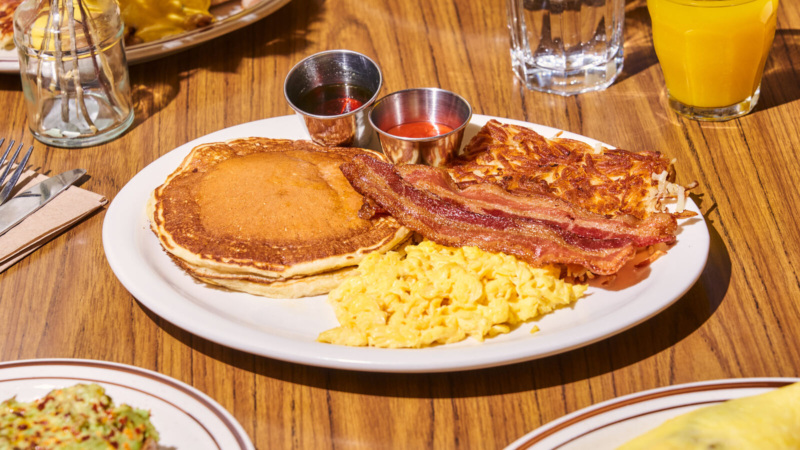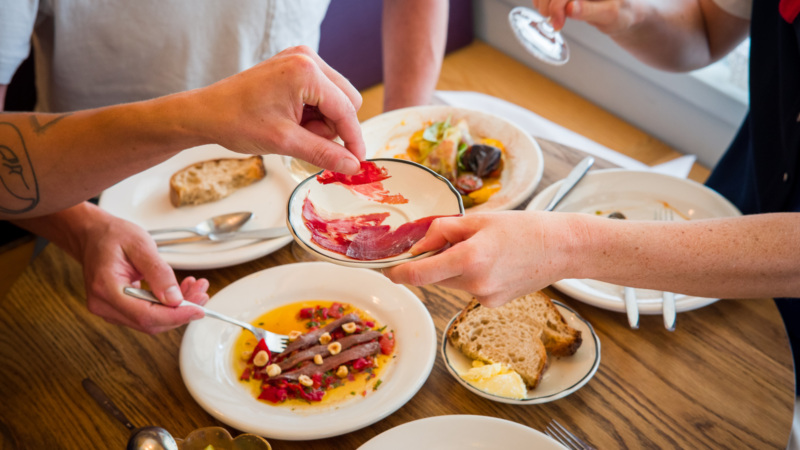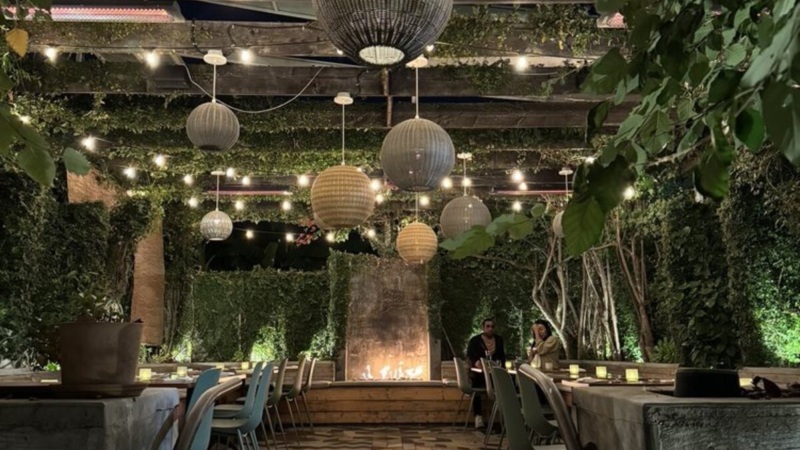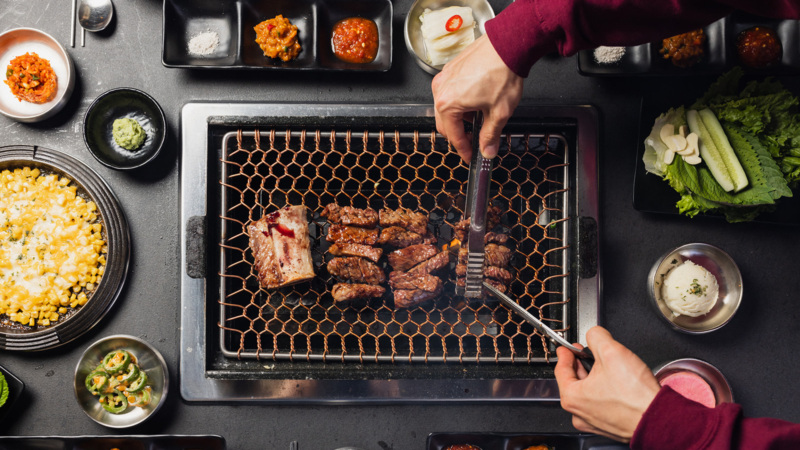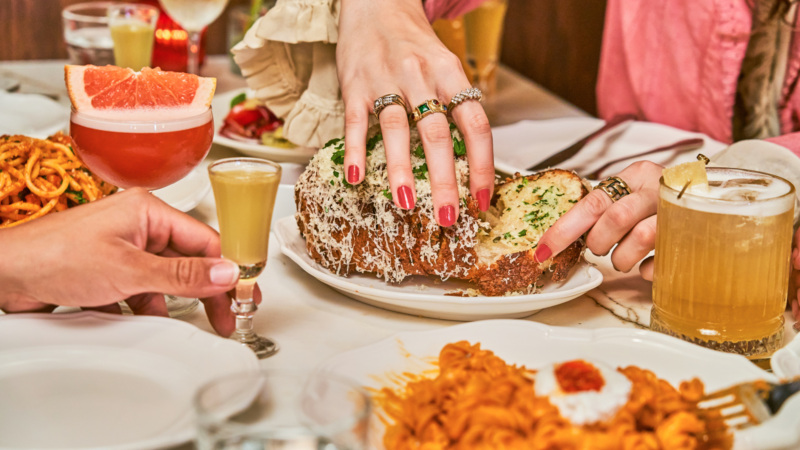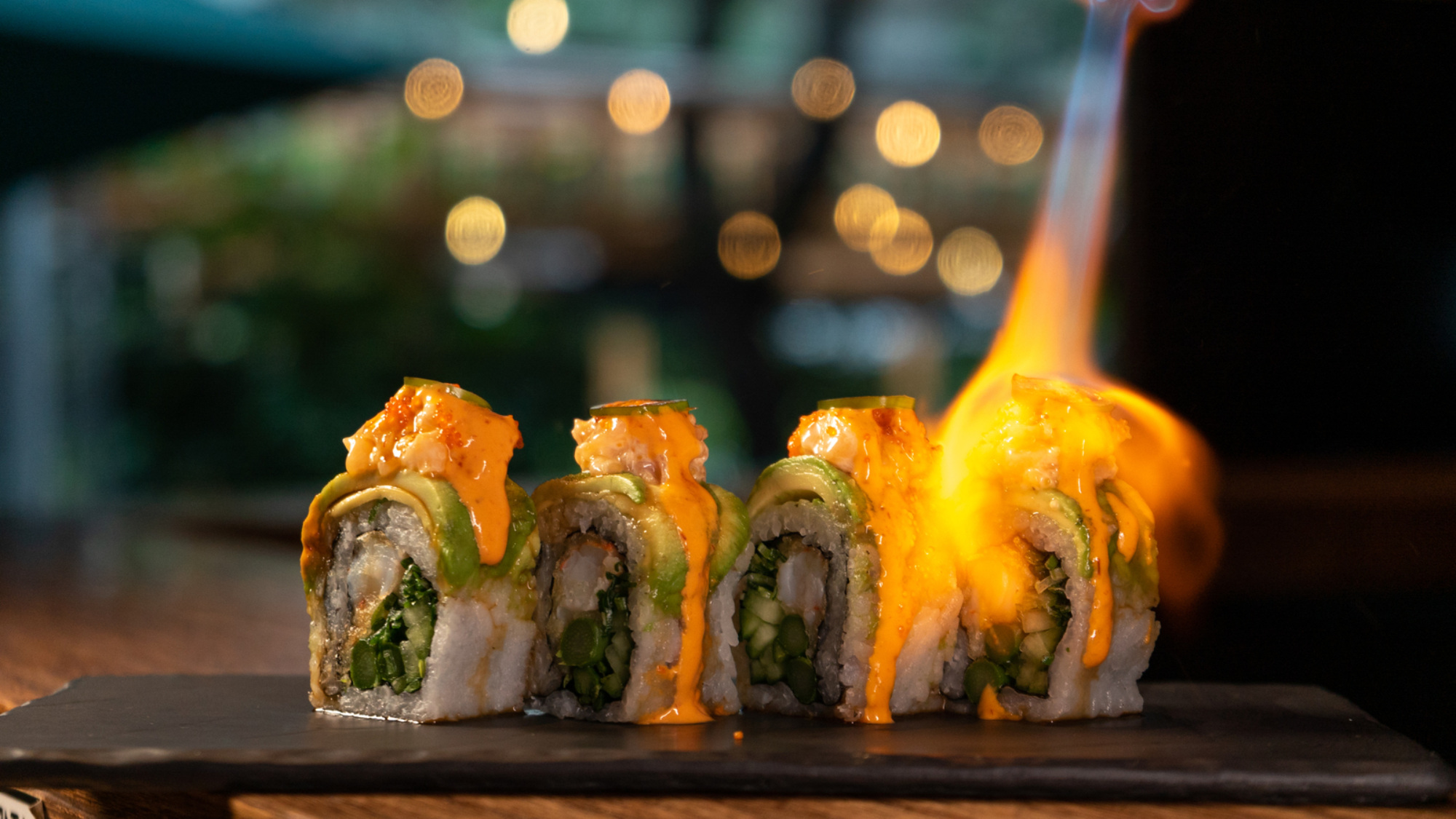
Santo Gives Silver Lake’s Sushi Scene a Mexican Twist
To hear Santo co-owner Rafael del Riu tell it, the sushi and sake specialist was fated to come to Los Angeles. The restaurant’s original Mexico City location is frequented by Angelenos, and they often encouraged del Riu to open a location north of the border. “It really stuck in our heads,” he says.
As luck would have it, a close friend of del Rio’s lives here, and reached out to him with an opportunity along a heavily-trafficked stretch of Sunset Boulevard in Silver Lake. “The stars aligned, we did some research, and we figured that there was a gap in the L.A. market,” del Rio says. The way he sees it, L.A. and Mexico City have so much in common, “they’re like sister cities — so it was really a no-brainer for us.”
But while the original Santo, in the Roma Norte neighborhood, is known for its party-hearty atmosphere, Santo L.A. has its own, decidedly calmer mood. “Mexico City is very hectic, active, energetic, always on — it’s a hardcore city,” del Rio says. “In L.A. it’s more of a chill vibe.” As a result, del Rio and co-owner Jos Gozain are focusing more on the food than the drinks here, as opposed to in Mexico City, where “the food is obviously a main character, but the cocktails and the bar are a big, big part of it.”
It may be a more relaxed Santo than some are used to, but it’s nonetheless an exciting new addition to Sunset Junction. In fact, the restaurant has been booked solid since it opened earlier this summer. If you’re lucky enough to find a seat at the sushi counter, here’s everything you need to know.
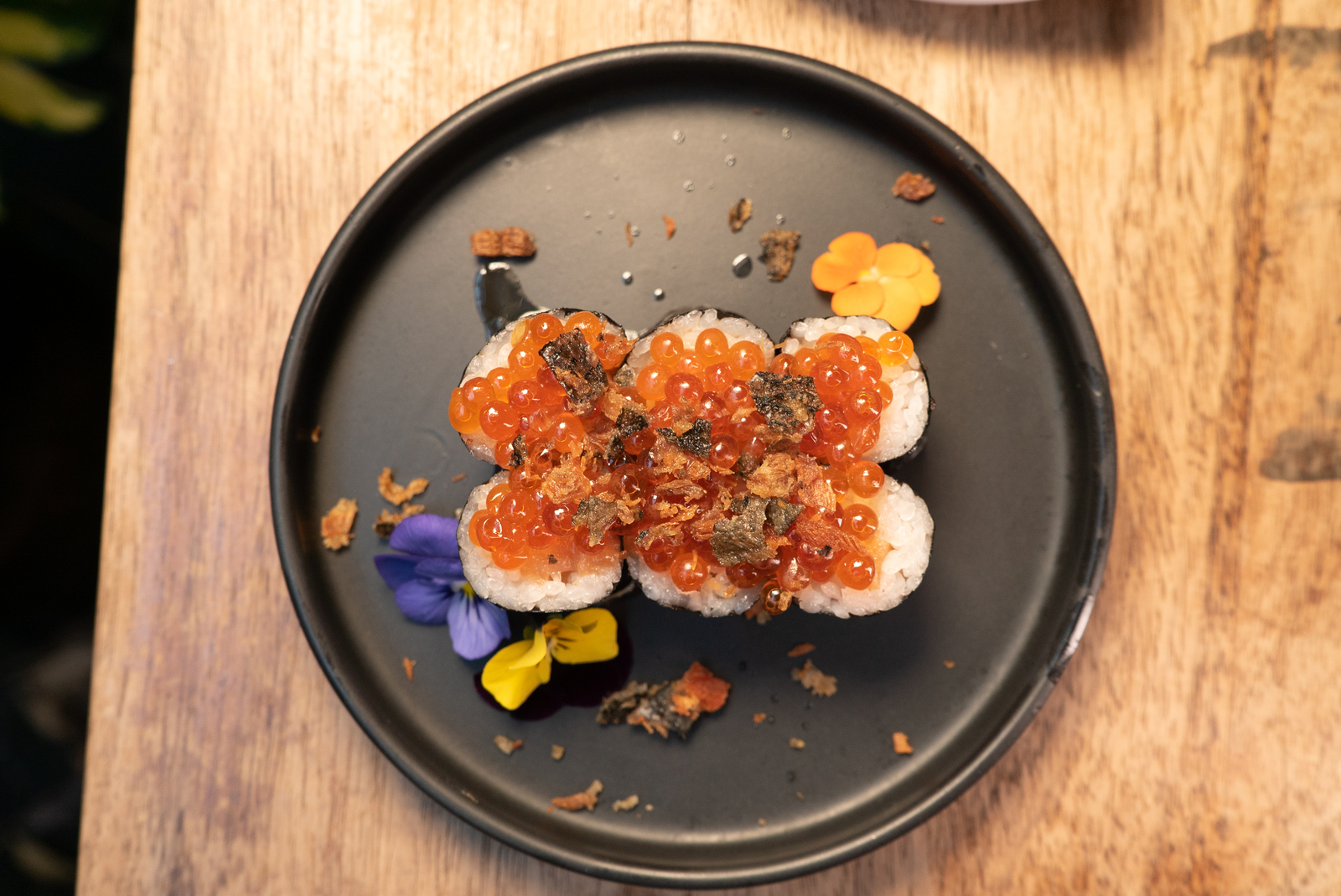
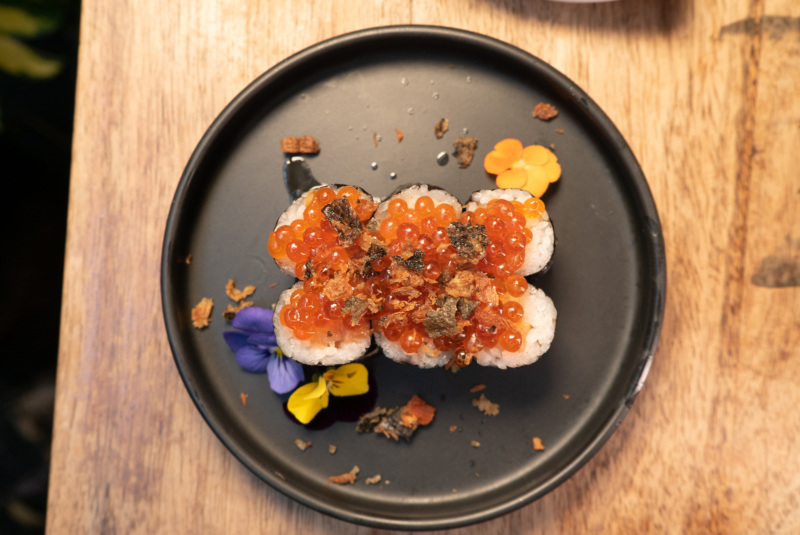
1. ‘Sushi Mexicano’ is the speciality here.
Yes, Santo is a sushi restaurant, but don’t expect a replica of your favorite Tokyo spot. “Our head chef, the one we started the project with in Mexico City, is Japanese,” del Rio says of chef Hiroshi Kawahito. “So everything starts traditionally, how he learned to do it. But he also helped us give it a little twist.”
Case in point: the edamame, a simple dish made more complex with the addition of salt from the Mexican state of Colima (“they’re famous for their salt, and it has a very specific taste,” del Rio says). The same can be said of the hamachi shoko nigiri, which pairs the fish with a rich Oaxacan chocolate sauce. “We really get creative with our menu,” del Rio continues. “We want to make sure that when you come here you have a unique experience.” The offerings run the gamut, from nigiri and sashimi to handrolls and less-traditional makis featuring ingredients like grilled zucchini and truffle tartare.
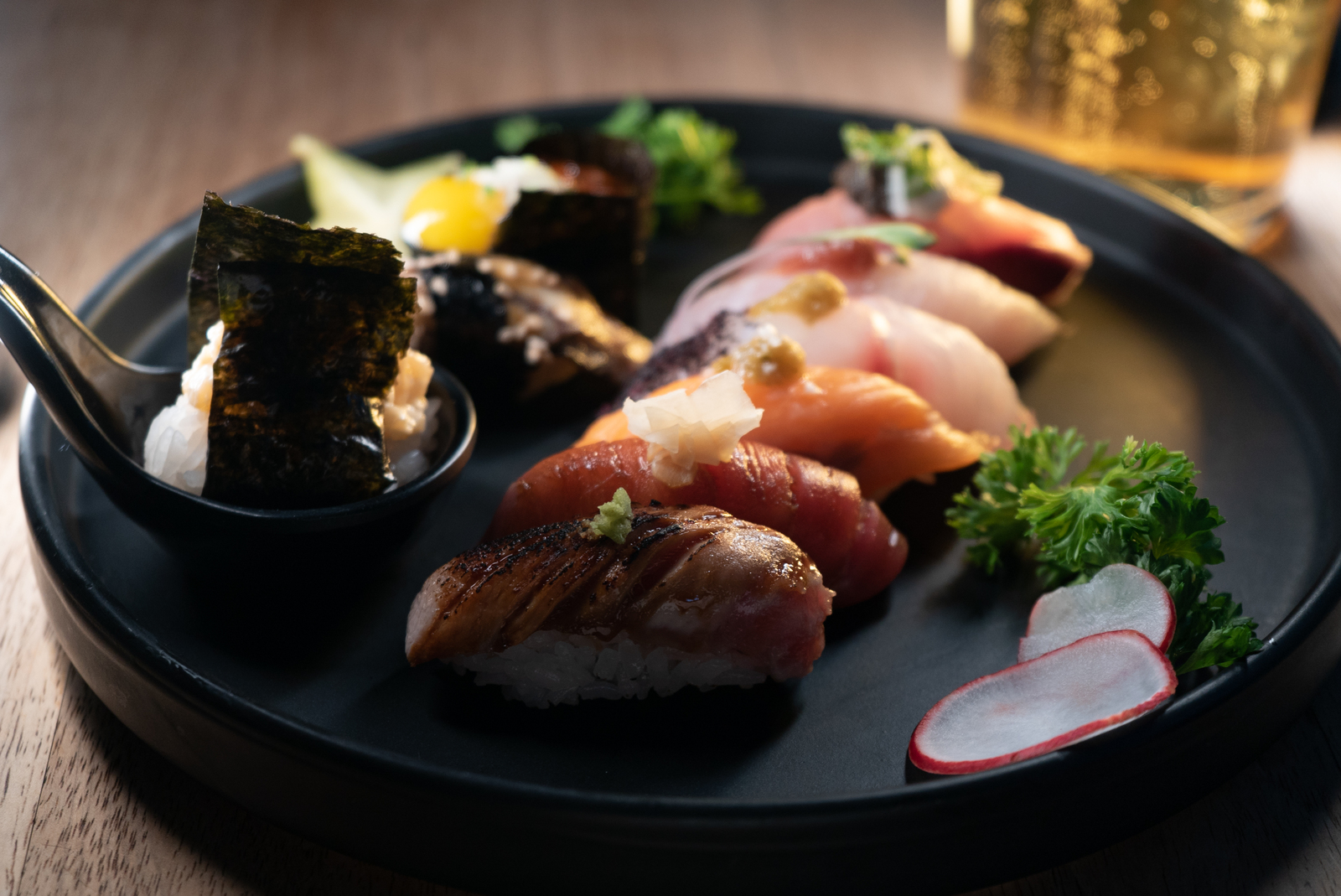
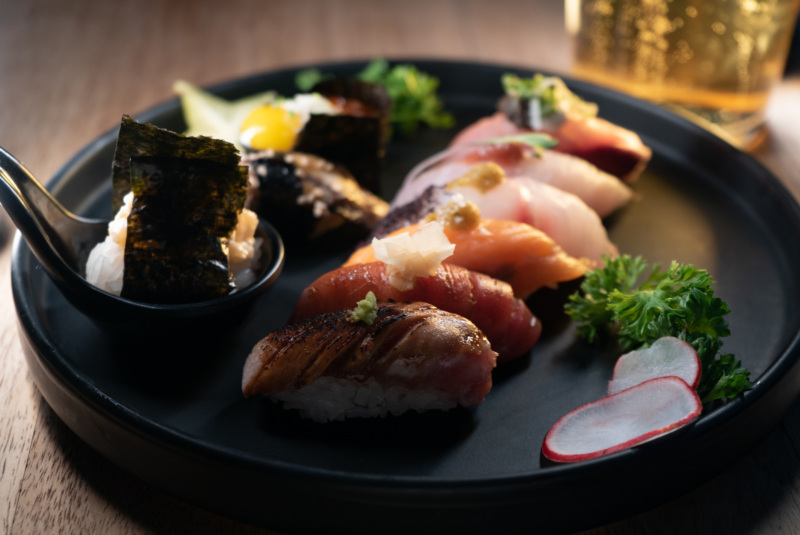
2. The beverage list gets adventurous, especially the sake.
Santo’s beverage program is run by Ricardo Nava, whose Mexico City bar Limantour is consistently ranked as one of the best in the world. But you won’t find any cocktails at Santo Silver Lake. Instead, there’s a well-curated selection of natural wines and beers. It’s the sake menu, however, that really shines.
“We have some sakes from a younger generation in Japan who were previously disinterested in sake because it was their parents’ or grandparents’ drink, but now they’re making it their own,” says general manager Cole Johnson. “Then we have, on the flip side, some really classic, traditional sake from breweries that go back to medieval times.”
Of course, this wouldn’t be L.A. without a bit of Hollywood flair — you’ll also find a bottle from master brewer Ohmine Shuzo, who partnered with Pharrell Williams to produce a high-end sake label. There’s also Heart of Oak, a sake from Philip Harper — the first non-Japanese toji (brewmaster) — who ages the spirit in old Jim Beam barrels to give the final product a brown tint and a slight whiskey flavor.
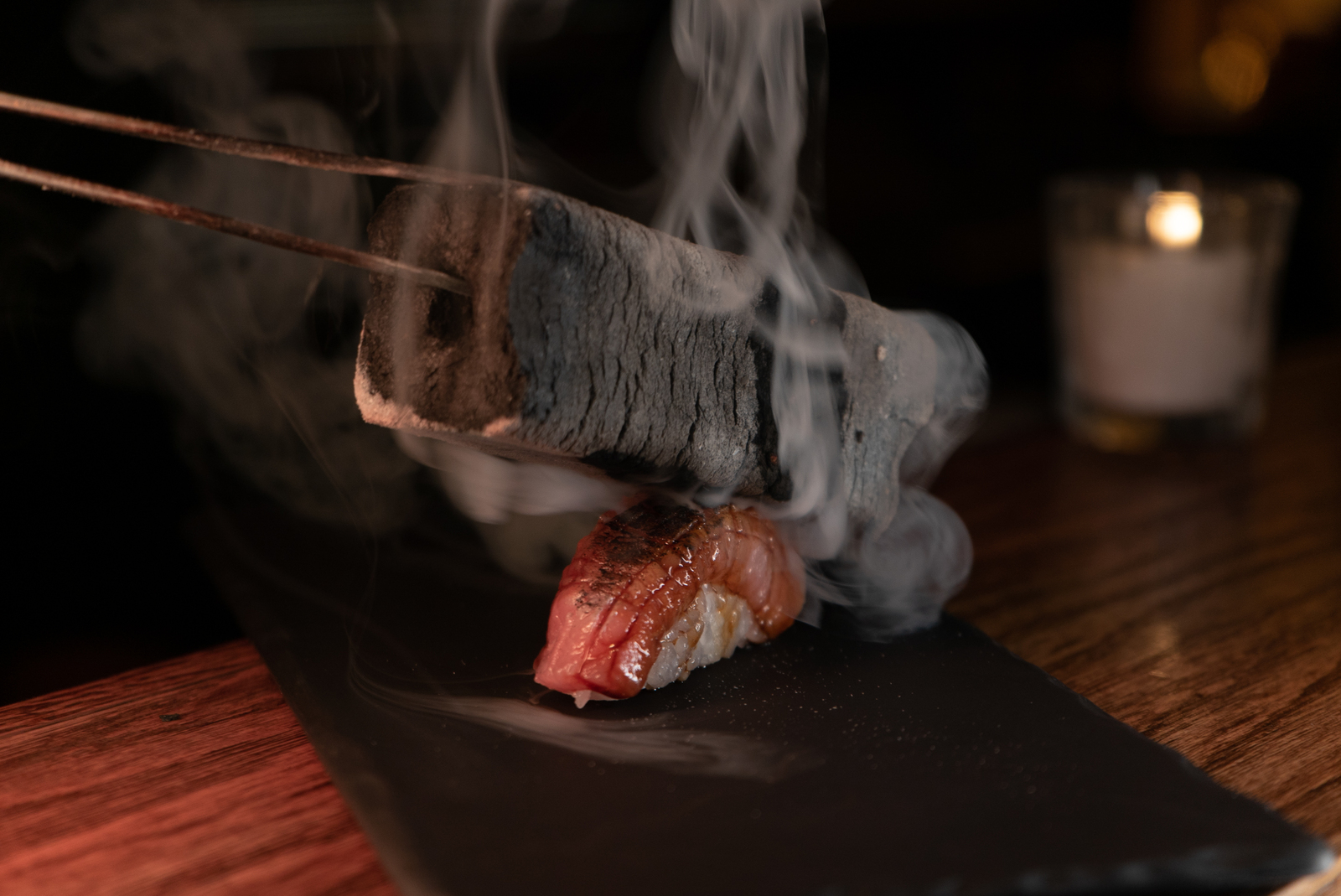

3. It’s designed as a neighborhood affair.
“We try to integrate the community into Santo in any way we can,” del Rio says. A large mural across the wall of the Mexico City location was painted by local artist Rodrigo Roji, who was then asked to collaborate on a menu item. At the Silver Lake location, a new mural from Roji adorns the main wall, while behind the bar, there’s a piece from local L.A. artist Crime By Design. Pointing to a DJ station in the room, del Rio adds that Santo invites area musicians to spin and perform. “It’s not just musicians,” he continues. “Instead of sourcing ice cream from just anywhere, we collaborated with the iconic ice cream makers across the street [Pazzo Gelato]. We like to work together with those around us.”
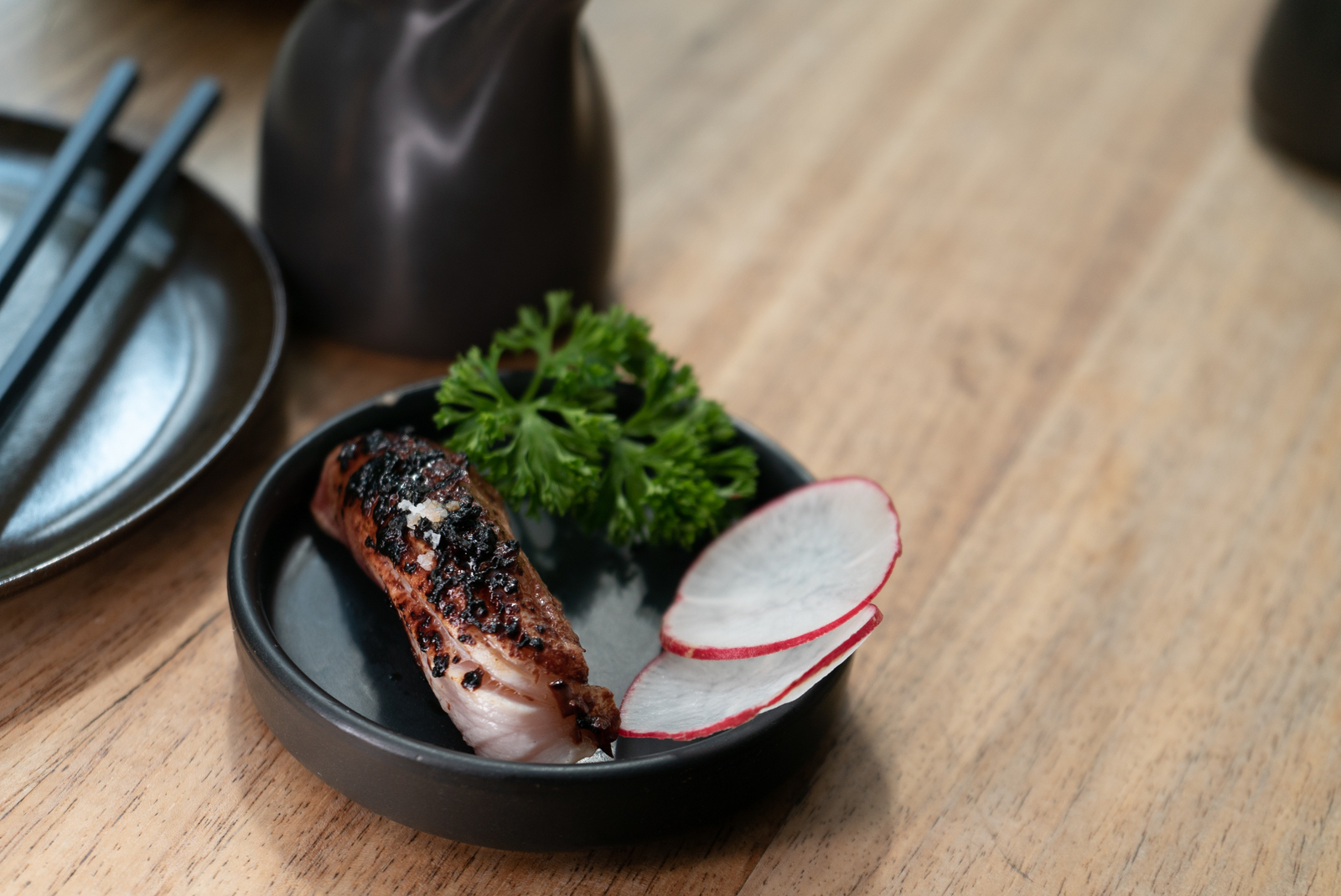
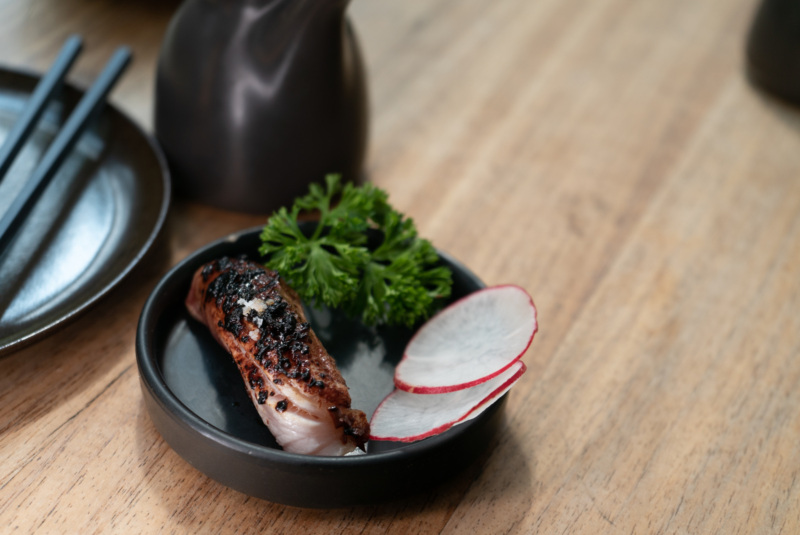
4. The bar may look familiar.
The Santo team wanted the décor to match the mood in L.A., but it still took inspiration from the Mexico City location. In Silver Lake, the main material is oak rather than concrete, and rattan lighting pendants give a sense of the Yucatán or the Pacific Riviera. Though if you grab one of the 17 seats at the counter, you’ll be facing a bar that is “very similar to the one in Mexico,” says del Rio. “It’s kind of an iconic bar — the shape, the bottles. It’s our statement piece.”
5. Oh, and there’s an expansion in the works.
Del Rio and Gozain are under construction on the space next door to Santo, which they hope to debut sometime in 2024. “I can’t say much, but it’s going to be a different concept,” says del Rio. “It’s not going to be another Santo or extension. It’s going to be a wine bar with Spanish tapas and a Latin twist.” Meanwhile, the partners are eyeing more cities for a Santo expansion plan. “We do want each new location to have its own style,” he says. “If tomorrow I open a Santo in New York, for example, it’s going to be us — the same vibe, the same brand — but it’s going to have its own New York personality.”
Oren Peleg is a journalist and screenwriter. He currently contributes to Eater LA, Los Angeles, The Infatuation, and hosts the Not Billable podcast. You can follow him here. While you’re at it, follow Resy, too.


